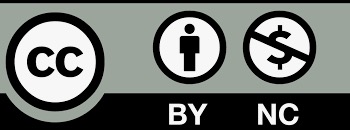Published
2025-03-08
Section
Review Articles
License
Copyright (c) 2025 Ishaq Hamed Al sulaimani, Hooi Lian Lim

This work is licensed under a Creative Commons Attribution-NonCommercial 4.0 International License.
The journal adopts the Attribution-NonCommercial 4.0 International (CC BY-NC 4.0), which means that anyone can reuse and redistribute the materials for non-commercial purposes as long as you follow the license terms and the original source is properly cited.
Author(s) shall retain the copyright of their work and grant the Journal/Publisher rights for the first publication with the work concurrently licensed since 2023 Vol.8 No.2.
Under this license, author(s) will allow third parties to download, reuse, reprint, modify, distribute and/or copy the content under the condition that the authors are given credit. No permission is required from the authors or the publisher.
This broad license intends to facilitate free access, as well as the unrestricted use of original works of all types. This ensures that the published work is freely and openly available in perpetuity.
By providing open access, the following benefits are brought about:
- Higher Visibility, Availability and Citations-free and unlimited accessibility of the publication over the internet without any restrictions increases citation of the article.
- Ease of search-publications are easily searchable in search engines and indexing databases.
- Rapid Publication – accepted papers are immediately published online.
- Available for free download immediately after publication at https://esp.as-pub.com/index.php/ESP

Copyright Statement
1.The authors certify that the submitted manuscripts are original works, do not infringe the rights of others, are free from academic misconduct and confidentiality issues, and that there are no disputes over the authorship scheme of the collaborative articles. In case of infringement, academic misconduct and confidentiality issues, as well as disputes over the authorship scheme, all responsibilities will be borne by the authors.
2. The author agrees to grant the Editorial Office of Environment and Social Psychology a licence to use the reproduction right, distribution right, information network dissemination right, performance right, translation right, and compilation right of the submitted manuscript, including the work as a whole, as well as the diagrams, tables, abstracts, and any other parts that can be extracted from the work and used in accordance with the characteristics of the journal. The Editorial Board of Environment and Social Psychology has the right to use and sub-licence the above mentioned works for wide dissemination in print, electronic and online versions, and, in accordance with the characteristics of the periodical, for the period of legal protection of the property right of the copyright in the work, and for the territorial scope of the work throughout the world.
3. The authors are entitled to the copyright of their works under the relevant laws of Singapore, provided that they do not exercise their rights in a manner prejudicial to the interests of the Journal.
About Licence
Environment and Social Psychology is an open access journal and all published work is available under the Creative Commons Licence, Authors shall retain copyright of their work and grant the journal/publisher the right of first publication, and their work shall be licensed under the Attribution-NonCommercial 4.0 International (CC BY-NC 4.0).
Under this licence, the author grants permission to third parties to download, reuse, reprint, modify, distribute and/or copy the content with attribution to the author. No permission from the author or publisher is required.
This broad licence is intended to facilitate free access to and unrestricted use of original works of all kinds. This ensures that published works remain free and accessible in perpetuity. Submitted manuscripts, once accepted, are immediately available to the public and permanently accessible free of charge on the journal’s official website (https://esp.as-pub.com/index.php/ESP). Allowing users to read, download, copy, print, search for or link to the full text of the article, or use it for other legal purposes. However, the use of the work must retain the author's signature, be limited to non-commercial purposes, and not be interpretative.
Click to download <Agreement on the Licence for the Use of Copyright on Environmental and Social Psychology>.
How to Cite
Exploring the influence of cultural dimensions on formative assessment practices among science teachers in Cycle two schools of Oman
Ishaq Hamed Al sulaimani
School of Educational Studies, Universiti Sains Malaysia (USM), Pinang, Minden, 11800, Malaysia
Hooi Lian Lim
School of Educational Studies, Universiti Sains Malaysia (USM), Pinang, Minden, 11800, Malaysia
DOI: https://doi.org/10.59429/esp.v10i3.2395
Keywords: Hofstede’s cultural dimensions; Formative assessment; Assessment practices; Cycle two schools; Oman
Abstract
There is a paucity of empirical research on the direct influence of culture on the employment of formative assessment practices in the classrooms. Consequently, this study employs Hofstede’s cultural dimensions to investigate the influence of different dimensions of culture on formative assessment practices. Data were obtained from 91 science teachers in Cycle Two schools located in the Sultanate of Oman. A self-administered structured type of questionnaire was employed, and the primary data were analyzed using SPSS. According to the results, the formative assessment practices of the science teachers were significantly influenced by the five culture dimensions investigated: Power-distance, Collectivism-individualism, Masculinity-Femininity, Uncertainty avoidance, and Oriental view (long-term orientation and short-term orientation). The findings offer empirical validation and vital theoretical insights into how culture can interact and influence delivery of formative assessment practices in the classroom. Practically, valuable insights are offered to policy makers and implementers as they embark on the strengthening of teachers’ competencies in formative assessment.
References
[1]. 1.Black, P. & Wiliam, D. (1998). Assessment and classroom learning, Assessment in Education, 5, 7-75.
[2]. 2.Black, P., & Wiliam, D. (2018). Classroom assessment and pedagogy. Assessment in education: Principles, policy & practice, 25(6), 551-575.
[3]. 3.Rusilah, Y. (2020) Introducing Dynamic Testing to Teachers in Malaysia: Experimental Investigation of Its Effects on Teachers' Beliefs and Practices about Assessment. (PhD thesis. School of Education, Durham University).
[4]. 4.Almuntasheri, S. (2016). Saudi Teachers' Practices of Formative Assessment: A Qualitative Study. Problems of Education in the 21st Century, 74(1), 6-15.
[5]. 5.Griffin, P., Care, E., & McGaw, B. (2012). The role of assessment in teaching and learning. Assessment and teaching of 21st century skills, 17-66.
[6]. 6.Kaur, A., & Noman, M. (2015). Exploring Classroom Practices in Collectivist Cultures through the Lens of Hofstede's Model. Qualitative Report, 20(11).
[7]. 7.Hofstede, G., Hofstede, G. J. & Minkov, M. (2010). Cultures and Organizations: Software of the Mind (Rev. 3rd ed.). New York: McGraw-Hill.
[8]. 8.Sutton, R. C., Miller, A. N., & Rubin, D. L. (2017). Research design in assessing learning outcomes of education abroad programs. Outcomes Assessment, 17.
[9]. 9.Troncon, L. E. D. A. (2004). Clinical skills assessment: limitations to the introduction of an" OSCE"(Objective Structured Clinical Examination) in a traditional Brazilian medical school. Sao Paulo Medical Journal, 122, 12-17.
[10]. 10.Al Shabibi, A. S., & Silvennoinen, H. (2018). Challenges in Education System Affecting Teacher Professional Development in Oman. Athens Journal of Education, 5(3), 261-282.
[11]. 11.Yin, Y., Tomita, M. K., & Shavelson, R. J. (2014). Using formal embedded formative assessments aligned with a short-term learning progression to promote conceptual change and achievement in science. International Journal of Science Education, 36(4), 531-552.
[12]. 12.Furtak, E. M., Ruiz‐Primo, M. A., & Bakeman, R. (2017). Exploring the utility of sequential analysis in studying informal formative assessment practices. Educational Measurement: Issues and Practice, 36(1), 28-38.
[13]. 13.Kumpas-Lenk, K., Eisenschmidt, E., & Veispak, A. (2018). Does the design of learning outcomes matter from students' perspective? Studies in Educational Evaluation, 59, 179-186.
[14]. 14.Samuel, R.V., Mohd, M., Nor, N., & Leong, K. E. (2019). Assessment for learning: Espoused and enacted practices of Malaysian teachers. Journal of Social Science & Humanities, 27(T2), 47-62.
[15]. 15.Sadler, D. R. (1989). Formative assessment and the design of instructional systems. Instructional science, 18(2), 119-144.
[16]. 16.Akpan, B. (2020). Mastery Learning---Benjamin Bloom. In Science Education in Theory and Practice (pp. 149-162). Springer, Cham.
[17]. 17.Sadler, I., & Reimann, N. (2018). Variation in the development of teachers' understandings of assessment and their assessment practices in higher education. Higher Education Research & Development, 37(1), 131-144.
[18]. 18.Lambert, D., & Lines, D. (2013). Understanding assessment: Purposes, perceptions, practice. Routledge.
[19]. 19.Panadero, E., Broadbent, J., Boud, D., & Lodge, J. M. (2019). Using formative assessment to influence self-and co-regulated learning: the role of evaluative judgement. European Journal of Psychology of Education, 34(3), 535-557.
[20]. 20.Singh, B. (2015). Barriers to formative assessment in school science: A critical realist perspective (Doctoral dissertation, UCL Institute of Education).
[21]. 21.Wiliam, D. (2013). Assessment: The bridge between teaching and learning. Voices from the Middle, 21(2), 15.
[22]. 22.Owen, L. (2016). The Impact of Feedback as Formative Assessment on Student Performance. International Journal of Teaching and Learning in Higher Education, 28(2), 168-175.
[23]. 23.Al-Hattami, A. A. (2019). The Perception of Students and Faculty Staff on the Role of Constructive Feedback. International Journal of Instruction, 12(1), 885-894.
[24]. 24.Irons, A., & Elkington, S. (2021). Enhancing learning through formative assessment and feedback. Routledge.
[25]. 25.Cassambai, S., Bridge, H., Gill, P. K., Shobaloju, S., Sgamma, T., & Rushworth, J. V. (2022). Case study: Co-creating a flipped-feed-in approach to a virtual biochemistry lab assessment: increasing student achievement and engagement in a large, diverse cohort. Essays in Biochemistry, 66(1), 29-37.
[26]. 26.Biggs, J., Tang, C., & Kennedy, G. (2022). Ebook: Teaching for Quality Learning at University 5e. McGraw-hill education (UK).
[27]. 27.Panadero, E., & Lipnevich, A. A. (2022). A review of feedback models and typologies: Towards an integrative model of feedback elements. Educational Research Review, 35, 100416.
[28]. 28.Gong, D., Yang, H. H., Wu, D., & Dai, J. (2023). Relationships between Teaching Presence, Connected Classroom Climate, and Deep Learning within the Rotational Synchronous Teaching Model. Education and Information Technologies, 28(2), 1715-1733.
[29]. 29.Black, P., & Wiliam, D. (2018). Classroom assessment and pedagogy. Assessment in education: Principles, policy & practice, 25(6), 551-575.
[30]. 30.Black, P. (2015). Formative assessment -- an optimistic but incomplete vision. Assessment in Education: Principles, Policy and Practice, 22(1), 161-177.
[31]. 31.Cagasan, L., Care, E., Robertson, P., & Luo, R. (2020). Developing a formative assessment protocol to examine formative assessment practices in the Philippines. Educational Assessment, 25(4), 259-275.
[32]. 32.Phillips, D. (2003). The truth of ecology: Nature, culture, and literature in America. Oxford University Press on Demand.
[33]. 33.Ovchinnikova, M. A., Bortnaya, S. A., & Pozdeeva, L. V. (2018). Confucian Dynamism and Cultural Dimensions of Hofstede's Theory. In Aspire to Science (pp. 440-444).
[34]. 34.Amir, S. (2019). English Language Teaching and Cultural Implications: An Analysis of Higher Secondary School Subject Specialists' Perceptions and Practices in Pakistan. Praxis International Journal of Social Science and Literature, 2, 1-13.
[35]. 35.Sturdivant, T. D., & Alanís, I. (2019). Teaching through culture: One teacher's use of culturally relevant practices for African American preschoolers. Journal for Multicultural Education.
[36]. 36.Lin, X., Schwartz, D. L. & Hatano. G. (2005). Toward Teachers' Adaptive Metacognition. Educational Psychologist, 40(4), 245-255.
[37]. 37.Asghar, M. (2013). Exploring Formative Assessment Using Cultural Historical Activity Theory. Online Submission, 4(2), 18-32.
[38]. 38.Al-Wassia, R., Hamed, O., Al-Wassia, H., Alafari, R., & Jamjoom, R. (2015). Cultural challenges to implementation of formative assessment in Saudi Arabia: An exploratory study. Medical teacher, 37(sup1), S9-S19.
[39]. 39.Sortkaer, B. (2019). Cultural capital and the perception of feedback. British Journal of Sociology of Education, 40, 647 - 663.
[40]. 40.Al-Issa, A. (2005). The Role of English Language Culture in the Omani Language Education System: An Ideological Perspective. Language, Culture and Curriculum, 18, 258 - 270.
[41]. 41.Hall, A., & Herrington, J. (2010). The development of social presence in online Arabic learning communities. Australasian Journal of Educational Technology, 26, 1012-1027.
[42]. 42.Harrasi, K. (2022). The culture of feedback on second-language writing in a higher education institute. Assessment & Evaluation in Higher Education, 47, 360 - 374.
[43]. 43.Barwani, T., Mekhlafi, A., & Neisler, O. (2010). Addressing the Challenges of Cross-Cultural Understanding through Service Learning in Higher Education: The Oman Experience. Citizenship, Social and Economic Education, 9, 179 - 192.
[44]. 44.The New Zealand Education Consortium. (2017). Evaluation of the Sultanate of Oman Education System (grades 1-12). The Ministry of Education of Oman, Muscat DC: Sultanate of Oman. Government printing office.
[45]. 45.Segelström, F. (2008). Service Design and Cultural Expectations on Services: Applying Hofstede's Cultural Dimensions to Services. Retrieved from: https://www.diva-portal.org/smash/get/diva2:117511/FULLTEXT01.pdf
[46]. 46.Hofstede, G. (1986). Cultural differences in teaching and learning. International Journal of Intercultural Relations, 10(3), 301-320.
[47]. 47.Bissessar, C. (2018). An application of Hofstede's cultural dimension among female educational leaders. Education sciences, 8(2), 77.
[48]. 48.Hofstede, G. (2011). Dimensionalizing cultures: The Hofstede model in context. Online readings in psychology and culture, 2(1), 1−26.
[49]. 49.Gómez-Rey, P., Barbera, E., & Fernández-Navarro, F. (2016). The impact of cultural dimensions on online learning. Journal of Educational Technology & Society, 19(4), 225-238.
[50]. 50.McFeeters, F. E. (2003). The Effects of individualism vs. collectivism on learner's recall, transfer and attitudes toward collaboration and individualized learning (Unpublished doctoral dissertation). Virginia Polytechnic Institute and State University, Blacksburg, VA.
[51]. 51.Wursten, H.; Jacobs, C. (2013). The Impact of Culture on Education. Available online: http://geerthofstede.com/tl_files/images/site/social/Cultureandeducation.pdf
[52]. 52.Cambridge, J. (2012). Educational institutions and cultural values. Cambridge University Press.
[53]. 53.Cidral, W., Aparicio, M., & Oliveira, T. (2020). Students' long-term orientation role in e-learning success: A Brazilian study. Heliyon, 6(12), e05735.
[54]. 54.Tarhini, A., Hone, K., Liu, X., & Tarhini, T. (2017). Examining the moderating effect of individual-level cultural values on users' acceptance of E-learning in developing countries: a structural equation modeling of an extended technology acceptance model. Interactive Learning Environments, 25(3), 306-328.
[55]. 55.Kaur, A., & Noman, M. (2015). Exploring Classroom Practices in Collectivist Cultures through the Lens of Hofstede's Model. Qualitative Report, 20(11).
[56]. 56.Cohen, J. (1988). Set correlation and contingency tables. Applied psychological measurement, 12(4), 425-434.
[57]. 57.Chyung, S. Y., Roberts, K., Swanson, I., & Hankinson, A. (2017). Evidence‐based survey design: The use of a midpoint on the Likert scale. Performance Improvement, 56(10), 15-23.
[58]. 58.Heritage, M. (2007). Formative assessment: What do teachers need to know and do? Phi Delta Kappan, 89(2), 140-145.
[59]. 59.Ruiz‐Primo, M. A., & Furtak, E. M. (2007). Exploring teachers' informal formative assessment practices and students' understanding in the context of scientific inquiry. Journal of research in science teaching, 44(1), 57-84.
[60]. 60.George, D., & Mallery P. (2003). SPSS for Windows step by step guide: A simple guide and reference. 11.0 update (4th ed.). Boston, MA: Allyn and Bacon.
[61]. 61.Clark, I. (2011). Formative assessment: Policy, perspectives, and practice. Florida journal of educational Administration & Policy, 4(2), 158-180.
[62]. 62.Ministry of Education, Oman. (2018). Omani Basic Education System. Muscat: Sultanate of Oman.
[63]. 63.Ghazarian, P. G., & Youhne, M. S. (2015). Exploring intercultural pedagogy: Evidence from international faculty in South Korean higher education. Journal of Studies in International Education, 19(5), 476-490.
[64]. 64.Liem, A. D., Nair, E., Bernardo, A. B., & Prasetya, P. H. (2008). The influence of culture on students' classroom social interactions. Teaching and learning: International best practice, 8, 377.
[65]. 65.Hofstede, G., & Hofstede, G. J. (2005). Cultures and organizations: Software of the mind. New York, NY: McGraw-Hill.
[66]. 66.Noor, A. M., Embong, A. M., & Aigbogun, O. (2015). Using L1 in L2 classrooms: A case study among secondary school students of mixed English language proficiencies. International Journal of Arts & Sciences, 8(2), 75.
[67]. 67.Masevo, B., & Aigbogun, O. (2022). Effects of Leadership Styles on Employee Performance: A Case Study of Turnall Social Sciences, 12(1), 289-305







